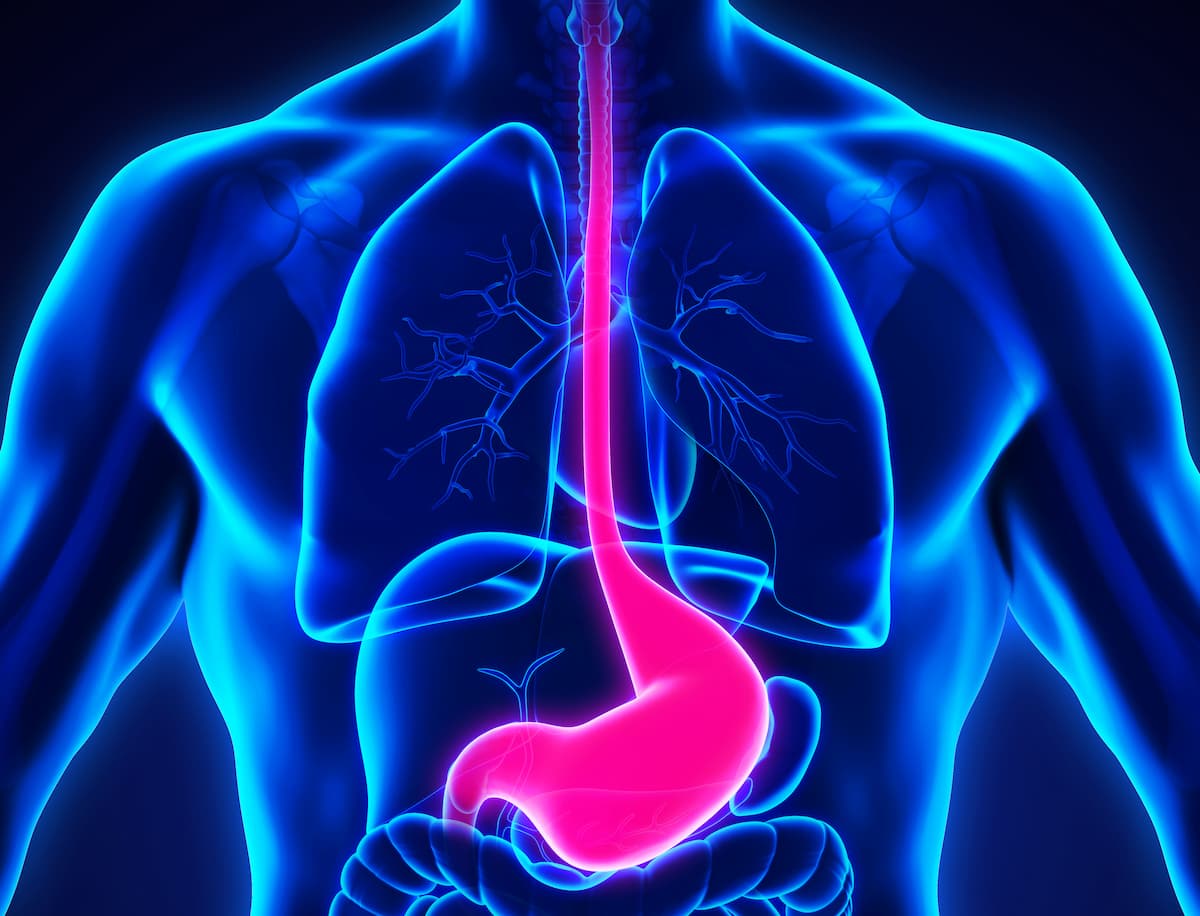Robot-Assisted Esophagectomy Achieves “Best Outcome Data” in Study
Robot-assisted minimally invasive esophagectomies with anastomotic technique were completed without complications or mortality in a majority of patients.
Robot-assisted minimally invasive esophagectomies with anastomotic technique led to 90% textbook outcomes in patients with cancer.

Robotic-assisted minimally invasive esophagectomies (RAMIEs) and a side-to-side anastomotic technique achieved a textbook outcome rate of 90%, according to a retrospective, single-institution study conducted at Roswell Park Comprehensive Cancer Center, Buffalo, New York, and published in the Journal of Gastrointestinal Surgery.1
Complete pathologic responses were observed in 27% of patients with a median of 21 lymph nodes retrieved. Additionally, 100.0% of patients achieved negative distal margins and 1.3% of patients achieved positive distal margins; positive radial margins incidence was 2.6%. Anastomotic leak was observed in 2 patients, neither of whom had to undergo operative intervention; 1 case healed after 2 weeks of nil per oral and J-tube feeds and the other underwent esophagogastroduodenoscopy with clip placement.
The median duration of hospital stay was 7 days. Chyle leak was observed in 3 patients, with thoracic duct embolization required in 1 of them. Also, 1 patient died within 30 days of the operation (postoperative pneumonia) and 2 died within 90 days of the operation (brain metastases and respiratory complications due to chronic respiratory failure and fibrosis). The 30-day and 90-day mortality rates were 0.7% and 1.3%, respectively; the 90-day stricture rate after endoscopic dilation was 0.7%.
At a median follow-up of 24.5 months (range, 3.2-68.4), 3-year overall survival (OS) was 74% (95% CI, 0.58-0.81); 3-year disease-specific survival was 73% (95% CI, 0.58-0.82); and 3-year recurrence-free survival was 61% (95% CI, 0.51-0.72). Median OS was not reached in the population due to limited follow-up.
In a press release on the study, Moshin Kukar, MD, FACS, chair of the Department of Surgical Oncology, chief of Foregut and Endocrine Surgery, program director of Complex General Surgical Oncology Fellowship, and first study author, stated, “This is among the best outcome data we have seen with this operation. Equally important, when a patient experiences complications, that means there will also be a delay in starting any adjuvant therapy—additional treatment is required after surgery. If you don’t receive that therapy in a timely manner, you have an increased risk that the cancer will return.”2
The study included data from 150 patients who underwent RAMIE at Roswell Park Comprehensive Cancer Center from 2020 to 2024; 18 patients had tumor location in the esophagus, 52 had type 1 gastroesophageal junction (GEJ), 71 had type 2 GEJ, and 9 had type 3 GEJ.
The median age of patients was 64 years, the majority were men (n = 128), had an ECOG performance status of 0 (n = 110), quit smoking more than 6 months ago (n = 69), had adenocarcinoma histology (n = 138), and had clinical stage III disease (n = 89). Neoadjuvant treatments included none (n = 22), chemotherapy alone (n = 20), concurrent chemoradiation (n = 98), and sequential chemotherapy and radiation therapy (n = 10).
For the abdominal approach of the treatment, patients were placed in the supine position with 4 robotic ports placed; arm 1 was Cadiere forceps to retract the stomach as needed, arm 2 was a fenestrated bipolar robotic stapler for stapling, arm 3 was a camera, and arm 4 was a vessel sealer for dissection.
For the thoracic approach of the treatment, patients were placed in the left lateral decubitus position with 3 robotic ports in the eighth intercostal space; arm 1 was 8 mm, arm 2 was 8 mm, and arm 3 was 12 mm. Anteriorly, a 3- to 4-cm incision was made in the sixth intercostal space for the bedside assistant. Arm 4 wasn’t used routinely in operations for thoracic dissection.
The study used the RAMIE-specific Enhanced Recovery After Surgery pathway. Postoperatively, patients were transferred to an overnight step-down unit and downgraded to the regular surgical floor on postoperative day 1. Incentive spirometry and aggressive ambulation occurred on postoperative day 1. Generally, discharge occurred on postoperative day 6 with patients on a full-liquid diet.
The median operative time was 420 minutes, and the estimated blood loss was 80 mL.
In this study, textbook outcomes were defined as those without complications of Clavien-Dindo grade 3b and higher, mortality, conversation to thoracotomy/laparotomy, and reoperation. It was noted that 2 surgeons, a complex general surgical oncology fellow, and a trained physician assistant were involved in the study; the surgeons had “extensive experience” in doing esophagectomies.
References
- Jehan F, Brady M, Attwood K, Hochwald SN, Kukar M. Achieving textbook outcomes with robotic-assisted Ivor Lewis esophagectomy: a single-center experience with 150 consecutive patients. J Gastrointest Surg. 2025;29(4):101979. doi:10.1016/j.gassur.2025.101979
- Roswell Park reports extraordinary outcomes for robot-assisted minimally invasive esophagectomy. News release. Roswell Park. April 9, 2025. Accessed April 14, 2025. https://tinyurl.com/mfzknum4
Newsletter
Stay up to date on recent advances in the multidisciplinary approach to cancer.
Elevating the Quality of Cancer Care via Cross-Department Collaboration
Experts from Sibley Memorial Hospital discuss how multidisciplinary work has enhanced outcomes such as survival and resource use at their institution.